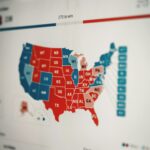Agricultural Markets Aren’t Free—but They Should Be
Lots of businesses have been forced to close their doors thanks to the COVID-19 pandemic. With much of the country sliding back into social distancing, and businesses forced to follow strict health and safety rules, the cost of staying in business has far outweighed the potential for profit. And in some industries, there’s simply no longer much of a demand for goods and services.
One thing Americans continued to do throughout the pandemic, maybe even more so, was eat.
While farmers across the country had to contend with byzantine COVID-19 rules, they never faced a decline in demand for their product.
So why isn’t the agriculture industry thriving? It’s a bit more complicated than supply and demand. But it doesn’t have to be and it probably shouldn’t be.
The answers lie in the policies that have controlled farming for the last century.
Automation and technology have certainly contributed to the rise in commercial farms at the demise of small hometown farms. But as many as 99 percent of commercial farms are still considered family farms, with the main operators and owners still being from the same family.
That being said, commercial farms only account for 10 percent of America’s farms. The efficient commercial farms aren’t the primary reason other farms have failed.
The problem lies with government subsidies and over-regulation. And while technically US farms operate within the free-market system, they hardly follow the basic rules of capitalism.
Capitalism requires supply and demand to set prices within the market. Meanwhile, America’s dairy industry is regulated by the federal government, with milk prices determined by a complicated pricing scheme that only accounts for about 10 percent of dairy products sold in the U.S. This is hardly free-market economics.
While prices haven’t changed much in the last few years, farmers have seen significant increases in other costs. Beyond standard operating costs like equipment and electricity, farmers have to deal with roughly 63,600 regulations as of 2019, 9,700 of which come from the Environmental Protection Agency (EPA) alone. Twenty years ago there were only 6,200 regulations from EPA on the agricultural industry. In that same year of 1999, a gallon of milk was only $2.88. Now a gallon of whole milk averages $3.45. That’s not a whole lot of a difference, especially while farmers contend with more than 3,000 costly new regulations today.
Taking into consideration all agricultural industries, 36 percent of farm income comes from government subsidies. Farmers aren’t determining how many animals to breed, how many crops to grow or how many cows to milk based on what the free market demands. More often than not, farmers decide what to plant based on how much government money they can get for what they produce.
This type of government regulation disincentives entrepreneurialism and innovation. Even the successful commercial farms rely heavily on the government, receiving 73 percent of all subsidies, making many of them essentially government-owned.
This is costing taxpayers more and more money every year. In 2020, farmers received $46 billion in direct aid from the federal government, the highest ever even adjusting for inflation. If farms were allowed to operate within a truly free market, prices would stabilize and supply would meet demand.
In a free-market system, it’s true that only the efficient survive. And that’s not a bad thing. We should be encouraging farmers to be efficient and innovative—not propping them as quasi-government entities. Ultimately, it would make farmers stronger.
As the country continues to grapple with the economic ripples from the coronavirus, it’s more important than ever to make sure our money is being spent responsibly. Encouraging farms to be government-owned is far from responsible and puts our economy on a dangerous path towards socialism.
America will always need food. Let’s make sure the market keeps providing it.




